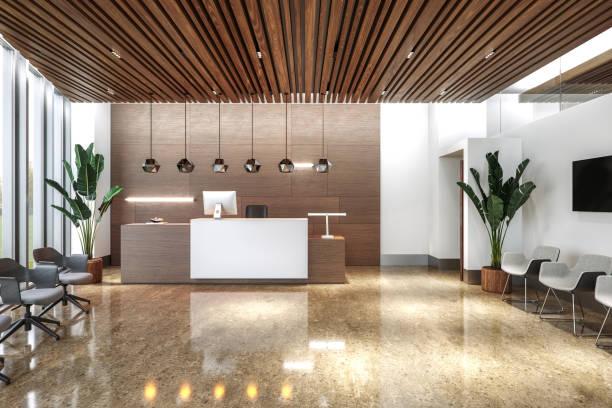Introduction to Office Reception Desk
In the corporate world, the reception area serves as the gateway to an organization, making the office reception desk a focal point that significantly influences visitors’ first impressions. Beyond being a mere piece of furniture, the reception desk is a symbol of professionalism, branding, and hospitality. This article explores the vital role of office reception desk, delving into their evolution, design considerations, and the impact they have on shaping the overall atmosphere of a workplace.
The Significance of First Impressions
The adage “you never get a second chance to make a first impression” holds particularly true in the business world. The office reception desk is the first point of contact for clients, partners, and job applicants, setting the tone for their entire experience within the organization. A well-designed and strategically positioned reception desk can convey professionalism, brand identity, and a welcoming atmosphere.
Designing for Functionality
While aesthetics are crucial, the functionality of an office reception desk cannot be overlooked. Receptionists often multitask, handling phone calls, managing appointments, and assisting visitors simultaneously. Modern reception desks are designed to accommodate these diverse tasks, featuring ample storage space, integrated technology solutions, and ergonomic considerations to ensure the receptionist’s comfort and efficiency.
Reflecting Brand Identity
The reception desk is a powerful visual element that contributes to the overall branding of a company. It serves as a canvas for showcasing the organization’s logo, color scheme, and design elements that embody its identity. Customization options, such as branded signage, illuminated logos, and unique materials, allow companies to create a memorable and cohesive brand image right from the moment visitors step through the door.
Versatility in Design
The evolution of office reception tables has seen a departure from the traditional, rigid structures to more versatile and adaptive designs. Today’s reception desks come in various shapes, sizes, and configurations, catering to the diverse needs and layouts of modern offices. L-shaped, U-shaped, and modular designs provide flexibility, allowing businesses to choose a reception desk that complements their space and workflow.
Material Innovation
Advancements in materials have played a significant role in transforming the aesthetics and functionality of reception desks. Traditional wood has been joined by materials like glass, metal, acrylic, and even sustainable options like bamboo. These materials not only contribute to the desk’s visual appeal but also offer durability, ease of maintenance, and a modern aesthetic that aligns with contemporary office design trends.
Technology Integration
In the era of digital transformation, reception desks have become hubs for technological integration. Touchscreen displays, digital sign-in systems, and integrated communication tools enhance the efficiency of receptionists and provide a seamless experience for visitors. These technological advancements not only streamline processes but also contribute to the perception of a technologically savvy and forward-thinking organization.
Creating a Welcoming Atmosphere
Beyond functionality and branding, the reception desk plays a pivotal role in creating a welcoming and hospitable atmosphere. Incorporating elements like comfortable seating, ambient lighting, and greenery around the reception area contributes to a positive and inviting space. Well-designed reception desks are often accompanied by thoughtfully curated waiting areas that reinforce a sense of hospitality and comfort.
Adapting to Changing Work Environments
The rise of flexible work arrangements and remote work has influenced the design of office reception desks. Some organizations are reimagining their reception areas to serve as multipurpose spaces that accommodate both in-person and virtual interactions. This adaptability ensures that the reception desk remains relevant in a changing work landscape, catering to the diverse needs of a modern workforce.
Conclusion
The office reception desk is more than a piece of furniture; it is a dynamic and integral component of a company’s identity and functionality. Its evolution from a traditional, static structure to a versatile, technologically integrated hub reflects the changing nature of work and the importance of creating positive first impressions. As businesses continue to prioritize a welcoming and professional environment, the reception desk will remain a key element in shaping the narrative of the workplace, leaving a lasting impression on visitors and contributing to the overall success of the organization.

















